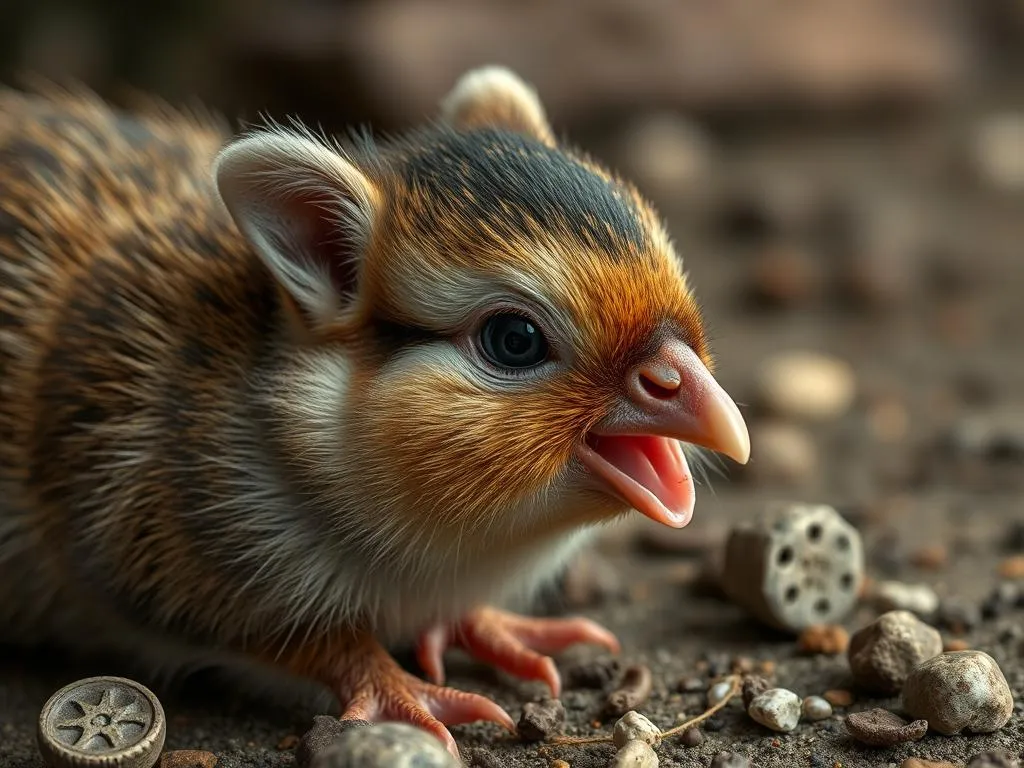
Understanding dog breeds is essential for anyone considering adding a furry friend to their family. Different breeds come with varying traits, temperaments, and care needs, making it crucial to find the right match for your lifestyle. One intriguing breed that has gained popularity in recent years is the poochin, a delightful hybrid that combines the characteristics of two beloved breeds. This article will delve into the world of dog breeds, explore their importance in pet ownership, and provide a detailed overview of various breeds, including the poochin.
The Basics of Dog Breeds
Definition of a Dog Breed
A dog breed is a specific group of dogs with distinct characteristics that have been intentionally bred for certain traits, such as size, temperament, and appearance. The historical context of dog breeding dates back thousands of years, with early humans selectively breeding dogs for hunting, herding, and companionship. Over time, this practice has led to the vast array of breeds we see today, each with unique qualities.
Importance of Breed in Pet Ownership
Understanding dog breeds is vital for prospective pet owners. Different breeds exhibit varied temperaments, sizes, and health concerns. For instance, some breeds are naturally more energetic and require more exercise, while others are laid-back and thrive in a quieter environment. By knowing these differences, individuals can better match a dog’s needs with their family dynamics, lifestyle, and living situation.
Overview of Popular Dog Breeds
Small Dog Breeds
Small dog breeds are known for their compact size and often charming personalities. Breeds like the Chihuahua and Pomeranian are excellent examples.
-
Chihuahua: Often weighing under 6 pounds, Chihuahuas are known for their loyalty and bold personalities. They adapt well to apartment living and require minimal exercise.
-
Pomeranian: These fluffy little dogs typically weigh between 3 to 7 pounds and are playful and intelligent. They thrive in homes where they receive ample attention and mental stimulation.
Ideal Living Conditions: Small breeds often fare well in apartments and homes with limited space, making them suitable for urban living and families with children.
Medium Dog Breeds
Medium dog breeds strike a balance between size and temperament. Breeds such as the Beagle and Bulldog are popular choices for families.
-
Beagle: Known for their keen sense of smell, Beagles are friendly, curious, and great with children. They typically weigh between 20 to 30 pounds and require regular exercise to stay happy.
-
Bulldog: With their distinct wrinkled face and stocky build, Bulldogs are known for their gentle demeanor. They are relatively low-energy and adapt well to apartment living.
Benefits for Various Lifestyles: Medium-sized dogs can fit into a variety of living situations and often require moderate exercise, making them ideal for families or individuals with a balanced lifestyle.
Large Dog Breeds
Large dog breeds often require more space and exercise but can be incredibly loyal and protective companions. Breeds like the Labrador Retriever and German Shepherd exemplify this category.
-
Labrador Retriever: Labs are one of the most popular breeds in the world due to their friendly nature and intelligence. They generally weigh between 55 to 80 pounds and thrive in active households.
-
German Shepherd: Known for their versatility and intelligence, German Shepherds are often used in police and military work. They weigh between 50 to 90 pounds and require consistent training and exercise.
Ownership Considerations: Large breeds require ample space to roam and play, as well as regular exercise to maintain their health and happiness.
Toy Breeds
Toy breeds are characterized by their tiny stature and affectionate nature. Breeds like the Poodle and Yorkshire Terrier are examples of this category.
-
Poodle: Available in toy, miniature, and standard sizes, Poodles are highly intelligent and easy to train. They are also hypoallergenic, making them a great choice for allergy sufferers.
-
Yorkshire Terrier: Weighing around 4 to 7 pounds, Yorkies are known for their spirited personalities. They require regular grooming and thrive on companionship.
Pros and Cons: While toy breeds can be excellent companions and adaptable to smaller living spaces, they may require extra care regarding socialization and health monitoring.
Understanding Hybrid Breeds
Definition of Hybrid Breeds
Hybrid breeds are created by crossbreeding two different purebred dog breeds. This practice has gained popularity as it often combines desirable traits from both parent breeds, resulting in unique characteristics. Understanding the differences between hybrid and purebred dogs is essential for prospective owners.
Examples of Popular Hybrid Breeds
One notable hybrid breed is the poochin, a cross between the Poodle and the Chihuahua.
- Poochin: This delightful hybrid typically inherits the intelligence and hypoallergenic coat of the Poodle, along with the playful and bold nature of the Chihuahua. Poochins are small, weighing around 5 to 15 pounds, making them perfect companions for families and individuals alike.
Characteristics and Care Requirements: Poochins are friendly, energetic, and require regular exercise and mental stimulation. Their grooming needs are moderate, and they thrive in homes where they receive plenty of love and attention.
Other notable hybrids include the Labradoodle (Labrador Retriever and Poodle) and Cockapoo (Cocker Spaniel and Poodle), both of which have gained popularity for their friendly temperaments and low-shedding coats.
Factors to Consider When Choosing a Dog Breed
Lifestyle Considerations
When selecting a dog breed, it’s essential to consider your lifestyle. Different breeds have varying activity levels and energy needs. For example, high-energy breeds like the Border Collie require more exercise, while more relaxed breeds may be content with a few short walks.
Space Requirements
Space is another crucial factor in breed selection. Small and toy breeds, like the poochin, can thrive in apartments with limited space, whereas larger breeds need ample room to play and explore.
- Apartment Living: Small breeds are generally well-suited for apartment living, while medium and large breeds may require houses with yards for adequate exercise.
Allergies and Health Considerations
If you or a family member has allergies, it’s essential to consider hypoallergenic breeds. Breeds like the Poodle and Bichon Frise produce fewer allergens, making them suitable for allergy sufferers. Additionally, understanding common health issues associated with specific breeds can help in making an informed decision.
The Role of Breed in Dog Training
Trainability of Different Breeds
Trainability can vary significantly between breeds. Breeds like the Labrador Retriever and Golden Retriever are known for their eagerness to please, making them easier to train. In contrast, breeds with independent streaks, like the Afghan Hound, may pose training challenges.
- Importance of Early Socialization: Regardless of breed, early socialization is crucial for developing a well-adjusted and well-behaved dog.
Training Techniques for Various Breeds
Tailoring training methods to a dog’s breed characteristics can enhance the training process. For instance, positive reinforcement works well with eager-to-please breeds, while more stubborn breeds may require patience and consistency.
Grooming Needs by Breed
Grooming Requirements
Grooming needs can vary widely between breeds. Small, medium, and large breeds all have different requirements based on their coat types and maintenance needs.
-
Small Breeds: Breeds like the poochin may require regular brushing to maintain their coat and minimize shedding.
-
Medium and Large Breeds: Regular grooming is essential for breeds with longer coats or those that shed heavily.
Breed-Specific Grooming Tips
For poochins, regular brushing is essential, especially if they inherit the Poodle’s curly coat. Bathing should be done as needed, and regular nail trimming and dental care are vital for overall health.
Health Considerations for Different Breeds
Common Breed-Specific Health Issues
Every breed comes with its own set of potential health issues. For example, large breeds may be prone to hip dysplasia, while small breeds can face dental problems. Understanding these breed-specific health concerns can help in proactive care.
The Importance of Regular Veterinary Care
Regular veterinary check-ups, vaccinations, and health screenings are crucial for maintaining a dog’s health, regardless of breed. Keeping up with preventive care can lead to a longer, healthier life for your canine companion.
Conclusion
Understanding dog breeds is pivotal for anyone considering adding a furry friend to their family. Each breed comes with unique traits, care requirements, and health considerations that can significantly influence your experience as a dog owner. By researching and considering the characteristics of various breeds, such as the lovable poochin, you can make an informed choice that aligns with your lifestyle and preferences. A well-matched dog will not only enrich your life but also provide a loving and loyal companion for years to come.









